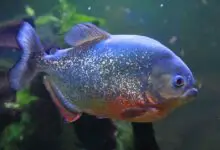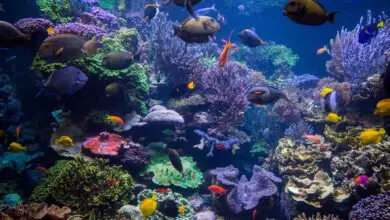Making Aquarium Water Healthy with Enough Oxygen

Oxygen from the air keeps fish alive. Fish get oxygen from water using their gills. Good water movement helps put more oxygen in the water. Low oxygen makes fish sick.
Stirring Up the Surface
The best way to add oxygen is by splashing and stirring the top of the water. Filters and powerheads can slosh the surface to mix in air. Bubbles from air pumps also splash the top when they reach the surface. A tank with good ripples across the entire top will have healthy oxygen levels.
Choosing Air Pumps by Aquarium Size
Air pumps add bubbles through tubes with air stones or wands. The pump size should match the tank size.
- Small 10 gallon tanks – Get a mini air pump around 1 liter per minute. Use one small air stone.
- Medium 30-40 gallon tanks – Look for pumps around 4 liters per minute. Use one large or two small air stones.
- Bigger 55-75 gallon tanks – Get a medium 4-8 liter per minute pump. You can use several air stones on a bigger pump.
- Large 90+ gallon tanks – Pick a large 8-12 liter per minute pump. Use lots of air stones spread out.
Having two smaller pumps instead of one big one gives backup oxygen if one pump stops working.
Types of Bubble Decorations
There are many decorations to create the bubbles:
- Air stones – Small porous stones make streams of tiny bubbles. Good for planted tanks.
- Air wands – Flexible plastic tubes with slits to make a wall of bubbles. Hide these behind plants.
- Disc diffusers – Glass or ceramic discs spread out bubbles along the bottom.
- Wood air stones – These combine discs and stones to give natural looking streams of small bubbles.
Using Two Pumps for Extra Safety
Having two separate air pumps instead of just one gives backup oxygen. Some benefits of using two pumps:
- More total bubbles and flow in the tank
- If one pump stops, the other one still works
- Take turns running each pump to make them last longer
- Keep oxygen going if you need to clean or fix a pump
Connect both pumps to one central manifold to combine and control flow. Place air stones at opposite ends to reach the whole tank.
Checking Oxygen Levels
Test kits let you measure the amount of oxygen in the water. Aim to keep levels above 6 parts per million. Below 3 ppm can harm fish. Tracking levels over time is useful to spot drops before they get too low.
Watching for Signs of Low Oxygen
Look for these early clues that oxygen is getting too low:
- Fish gasping at the surface
- Hanging out only at filter outlets
- Acting sluggish and not eating
- Losing color or frayed fins
- Cloudy water and rotten smells
If you see any of these, add more air stones right away. Improve circulation and surface splashing too. Low oxygen for too long can make fish very sick.
Conclusion
The best oxygen levels use a mix of splashing the surface while also adding air bubbles. Test levels often and watch fish closely. Add backup air pumps as a safety net. Healthy oxygen helps fish stay happy and active for years!







